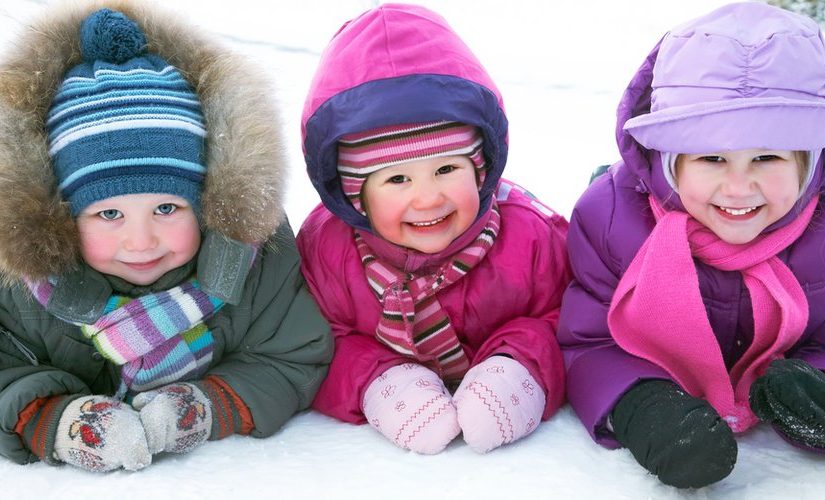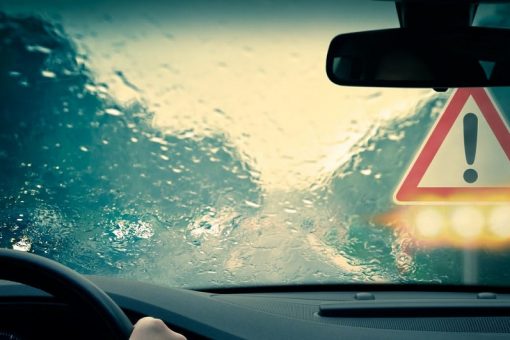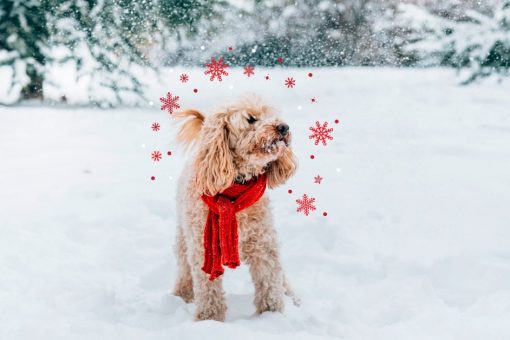Whether winter brings severe storms, little snow, or just cold temperatures, the American Academy of Pediatrics (AAP) has some valuable advice on how to keep your children safe and warm.
What to wear?
• Dress your babies and children in warm clothes for outdoor activities. Several thin layers will keep them dry and warm. Don’t forget to put on warm boots and gloves or mittens and a hat.
• The general rule of thumb for older babies and toddlers is to dress them in one more layer of clothing than an adult would wear under the same conditions.
• When traveling by car, infants and children should wear thin, tight capes rather than bulky coats or snow suits. For more information, see AAP Tips for Safe Car Seat Use in the Winter.
• There should be no blankets (blankets), duvets, pillows, crib bumpers, sheepskins, and other loose bedding in the sleeping area because these objects are linked to death from suffocation. Sleepwear such as rompers or baby sleeping bag blankets is preferred.
• If you have to use a blanket or blanket to keep a sleeping baby warm, it should be thin and tucked under the crib mattress and should only reach the baby’s chest height to reduce the likelihood that the baby’s face is covered by the bedding.
Hypothermia
• Hypothermia occurs when a child’s temperature drops below normal due to exposure to cold temperatures. It usually occurs when a youngster is playing outside in extremely cold weather without wearing appropriate clothing or when clothing gets wet. It occurs more often in children than in adults.
• Once hypothermic, your child may shiver and feel lethargic and clumsy. He may have difficulty speaking and his body temperature will drop in more severe cases.
• If you suspect that your child has hypothermia, immediately call 911. While help arrives, take him inside, remove any wet clothing, and wrap him in blankets or warm clothing.
Freezing
- Frostbite happens when the skin and external tissues freeze. This condition tends to occur in the extremities, such as the fingers, toes, ears, and nose. They may turn pale, gray, and blistered. At the same time, the child may complain that his skin is burning or numb (asleep).
- If frostbite occurs, bring the child inside and place the frozen parts of her body in warm (not hot) water. 40 ° C (104 ° F) is recommended (roughly the water temperature in most bathtubs). Warm wipes can be applied to the frozen nose, ears, and lips.
- Do not rub the frozen areas.
- After a few minutes, dry the child and cover him with clothing or blankets/blankets. Give him something hot to drink.
- If the numbness continues for more than a few minutes, call your doctor.
Safe winter sports and activities
Set appropriate time limits for playing outside to prevent hypothermia or frostbite. Bring the children in periodically to warm up.
Consuming alcohol or drugs before engaging in a winter activity, such as riding a snowmobile or skiing, is dangerous and should not be allowed under any circumstances.
Ice skating
- Only allow children to skate on surfaces that have been approved. Look for signs posted by your local police or recreation department or call your local police department to ask which areas are appropriate.
- Recommend that your child:
o Skate in the same direction as everyone else.
o Avoid running across the ice.
o Never skate alone.
o Do not chew gum or eat candy/sweets when skating.
o Wear a helmet, knee, and elbow pads, especially while learning to skate to keep you safe.
Sled slide
- Keep children sledding away from motorized vehicles.
- Children need to be supervised while on the sled.
- Children under the age of 5 do not practice sliding alone.
- Separate young children from older children.
- Sledding feet first or sitting, rather than lying head-forward, can prevent head injury.
- It is a good idea for your child to wear a helmet (for ice hockey not cycling) while riding the sled.
- Sleds must be structurally sound with no sharp edges and chips and the steering gear must be well lubricated.
- Slopes for sleds should not have obstacles, such as trees or fences; they must be covered with snow, not ice; They should not be too steep (slope less than 30 °) and should end with enough flat space for braking.
- Avoid sledding in crowded areas.
Skiing on snow and sliding on snowboards
- A trained instructor should teach children to ski or snowboard in a program designed for children.
- Never ski alone or slide on snowboards.
- Young children should always be supervised by an adult. The need for adult supervision of older children depends on the maturity and ability of the child. If older children are not with an adult, they must at least be accompanied by a friend.
- All skiers and snowboarders must wear helmets. In ski areas, the use of a helmet should be required, but if it is not required, parents should make their children comply with this requirement.
- The equipment must fit the child. Skiers must wear safety bindings that must be checked at least every year. Those who slide on snowboards should wear gloves with integrated wrist guards. Eye protection or goggles should also be worn. Hip protectors have also been shown to be effective in preventing injuries.
- Slopes must be appropriate to the skill and experience of the skier or snowboarder. Avoid slopes where there are many people.
- Avoid skiing in areas where there are trees and other obstacles.
Snowmobile ride
- The AAP recommends that children under the age of 16 do not operate snowmobiles and that children under the age of six never ride these vehicles.
- Do not use a snowmobile to pull a sled or skiers.
- Wear protective glasses and a safety helmet approved for use in motorized vehicles, such as motorcycles.
- Travel at safe speeds.
- Never ride a snowmobile alone or at night.
- Stay on the marked paths, away from roads, water, railways, and pedestrians



